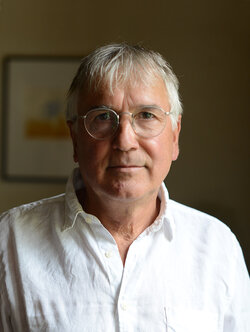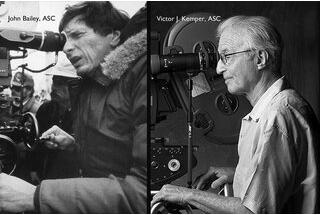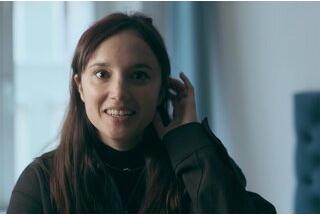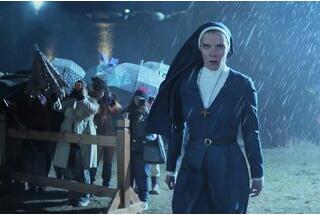Director of photography Thierry Arbogast, AFC, discusses his work on "The Family", by Luc Besson
A Mafia boss in Normandy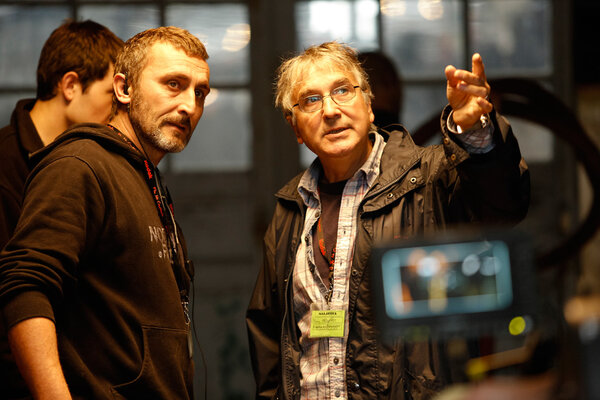
The film is set in Normandy but when you watch it, it looks like it was filmed under a Californian sun. Could you tell us a bit about that choice?
Thierry Arbogast: The film is set at the time of year when children go back to school… It’s supposed to be the end of the summer and we were aiming for a sunny, happy environment. We did indeed enjoy great weather during filming in Normandy. In any case, scenes like the barbeque couldn’t have been shot without sun. It was hard to transition those summer scenes with the “outdoor” shots we did on set inside the Cité du Cinéma where Hugues Tissandier and his team recreated the garden and back of the house, with the veranda beneath which Fred Blake (Robert De Niro) tries to write his memoirs… Like the scene where he meets his gardener neighbour and gets mixed up when he tries to lie about the subject of his book being about the allied landing in Normandy…
What was your lighting strategy for those scenes?
TA: The garden was really big with lots of trees and an immense area to be lit. So I had the entire ceiling covered with white fabric in order to use the entire surface as an indirect lighting source to recreate a sky effect. In order to mimic the sun, two or three 18kW Fresnel HMI were used side by side.
Did filming most of the movie in studio inside the Cité du Cinema determine its style?
TA: Besides being comfortable for the actors, the studio allowed us to save an extraordinary amount of time in terms of organization. We could do outdoor shots or night shots (like the one where he buries the corpse, for example) one right after the other. The inside of the house was also reconstructed, but on the basis of a lovely Normandy house that Luc Besson had chosen. Some other sets were also recreated, such as the roof of the church that Belle (Dianna Agron) climbs up onto with a composite image of the actual view from the belfry at night as a background. The entire thing was matched at eye-level with the shots filmed inside the village at night.
What lenses did you use?
TA: This was the first time since Léon that Luc Besson asked me to go back to anamorphic lenses. Even though he filmed all his first movies in Scope, it was on The Fifth Element that he discovered the Super 35 – because of the excessive expense of special effects when you film in anamorphic. Because he fell in love with the Arri Variable Prime short spherical zooms which he truly made part of his directing and camera style (he usually operates the camera himself), I hadn’t since had the opportunity to work in real Scope with him. On Malavita, it was he who specifically requested we use Scope. I chose to use Panavision series G and Primo CF in order to reinforce the contrast between the actors’ faces and the background, as well as the blurry effect that anamorphic gives it.
Why two different series?
TA: We’ve often used series G with the Steadicam because of their lightness, whereas the Primo series was only used by Luc for the second camera. I have also used the new Panavision G zooms with front anamorph design (40-80 and 70-200 mm) and they produce Scope-like results, unlike those with back anamorph design. They are really bright lenses (T2.8 and T3.5), which let me use them almost as though they were standard lenses.
Is the film digital?
TA: No! The film was mostly shot in 35mm with Kodak 250D, 50D and 500T cameras. Luc told me it might be his last movie using regular film stock and maybe it was his opportunity to rediscover the sensations of filming in anamorphic from the beginning of his career, as well as to give a sort of 1970s-80s feel to the movie. Only the outdoor night shots were filmed with an Alexa 4/3 and the same lenses in order to allow us to work with an almost-natural level of light on set. For those scenes (arrival of the hit men at the train station and the end of the film with the shooting in the village streets), we chose sodium lighting based on the many streetlamps in the Normandy village (Le Sap) that we had chosen on purpose. The effect of that orange-yellow light is really unique and has to be gotten used to… Personally, I really like that golden monotone! I also allowed myself a couple of variations, like during the shooting scene when Belle is on her knees in the middle of the street and is lit by a green-blue light (like a mercury streetlamp). It was an artificial-looking effect, but it seemed to fit with the end of that scene, to make the image signify that she had been saved.
The church is a set recurrently associated with Michel Pfeiffer’s character…
TA: That was an actual church. There weren’t any wide-angle shots in the church, but I had to stabilize the interior lighting using Arrimax 18 kW outside each of the stained glass windows. Without direct sunlight, everything became much too dull and grey inside. It was a lot of setup but it permitted us to work almost as though we were in a studio.
The American flashbacks offer a much less colourful and saturated visual than the French part…
TA: All of the flash-back outdoor scenes were filmed in New York. That, of course, means that those images were very different from those filmed in Normandy. The bricks, the textures, and a less open sky. The scene filmed indoors in a warehouse was filmed in France. But I must say that on that part of the film I was given a free hand over the lighting effects. That was reinforced by Luc Besson during colour grading when he pushed the image towards a sepia reminiscent of 1970s films. There is also the short flashback of the barbeque scene, which was filmed in Normandy in the garden of Arthur’s house (Arthur and the Invisibles). We chose an appropriate angle, rearranged the garden with some accessories, and then inserted the bridge and New York skyline as a background behind the fence…
(Interview conducted by François Reumont on behalf of the AFC)
Malavita, a film by Luc Besson
Cinematography by Thierry Arbogast, AFC
Starring
Robert De Niro, Michelle Pfeiffer, Tommy Lee Jones
Release (France): 23 October 2013
Set Design: Hugues Tissandier
Costumes: Olivier Beriot
Sound: Didier Lozahic and Ken Yasumoto
Editing: Julien Rey
 En
En
 Fr
Fr